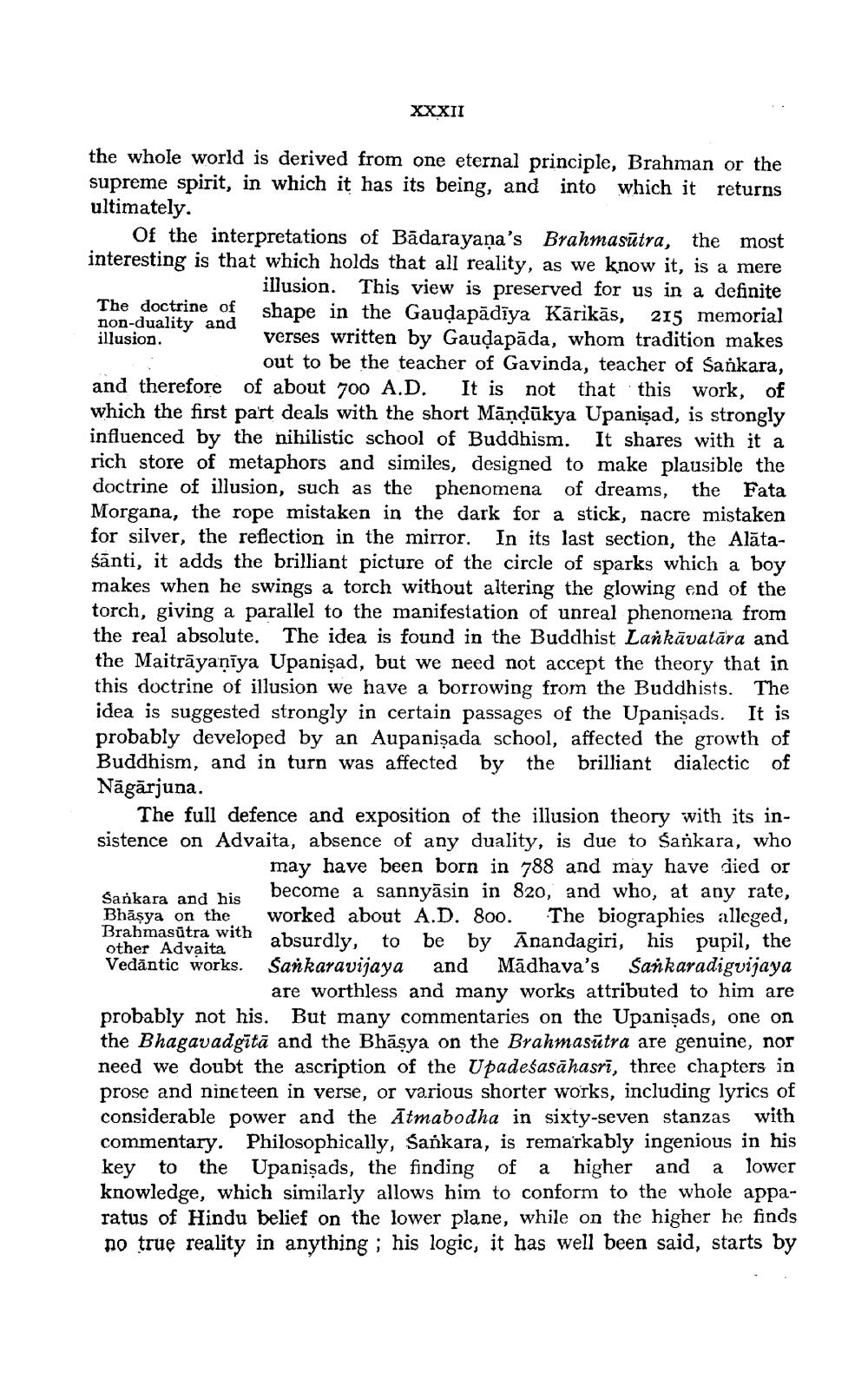________________
XXXII
the whole world is derived from one eternal principle, Brahman or the supreme spirit, in which it has its being, and into which it returns ultimately.
Of the interpretations of Bādarayana's Brahmasūtra, the most interesting is that which holds that all reality, as we know it, is a mere
illusion. This view is preserved for us in a definite The doctrine of
shape in the Gaudapādiya Karikās, 215 memorial non-duality and illusion.
verses written by Gaudapāda, whom tradition makes
out to be the teacher of Gavinda, teacher of Sankara, and therefore of about 700 A.D. It is not that this work, of which the first part deals with the short Māndūkya Upanişad, is strongly influenced by the nihilistic school of Buddhism. It shares with it a rich store of metaphors and similes, designed to make plausible the doctrine of illusion, such as the phenomena of dreams, the Fata Morgana, the rope mistaken in the dark for a stick, nacre mistaken for silver, the reflection in the mirror. In its last section, the Alātaśānti, it adds the brilliant picture of the circle of sparks which a boy makes when he swings a torch without altering the glowing end of the torch, giving a parallel to the manifestation of unreal phenomena from the real absolute. The idea is found in the Buddhist Lankāvatāra and the Maitrāyaṇīya Upanişad, but we need not accept the theory that in this doctrine of illusion we have a borrowing from the Buddhists. The idea is suggested strongly in certain passages of the Upanişads. It is probably developed by an Aupanişada school, affected the growth of Buddhism, and in turn was affected by the brilliant dialectic of Nāgārjuna.
The full defence and exposition of the illusion theory with its insistence on Advaita, absence of any duality, is due to Sankara, who
may have been born in 788 and may have died or Sankara and his
become a sannyāsin in 820, and who, at any rate, Bhāşya on the worked about A.D. 800. The biographies alleged, Brahmasūtra with other Advaita
absurdly, to be by Anandagiri, his pupil, the Sankaravijaya and Madhava's Sankaradigvijaya
are worthless and many works attributed to him are probably not his. But many commentaries on the Upanişads, one on the Bhagavadgītā and the Bhāsya on the Brahmasūtra are genuine, nor need we doubt the ascription of the Upadeśasāhasri, three chapters in prose and nineteen in verse, or various shorter works, including lyrics of considerable power and the Atmabodha in sixty-seven stanzas with commentary. Philosophically, Sankara, is remarkably ingenious in his key to the Upanişads, the finding of a higher and a lower knowledge, which similarly allows him to conform to the whole apparatus of Hindu belief on the lower plane, while on the higher he finds no true reality in anything ; his logic, it has well been said, starts by




